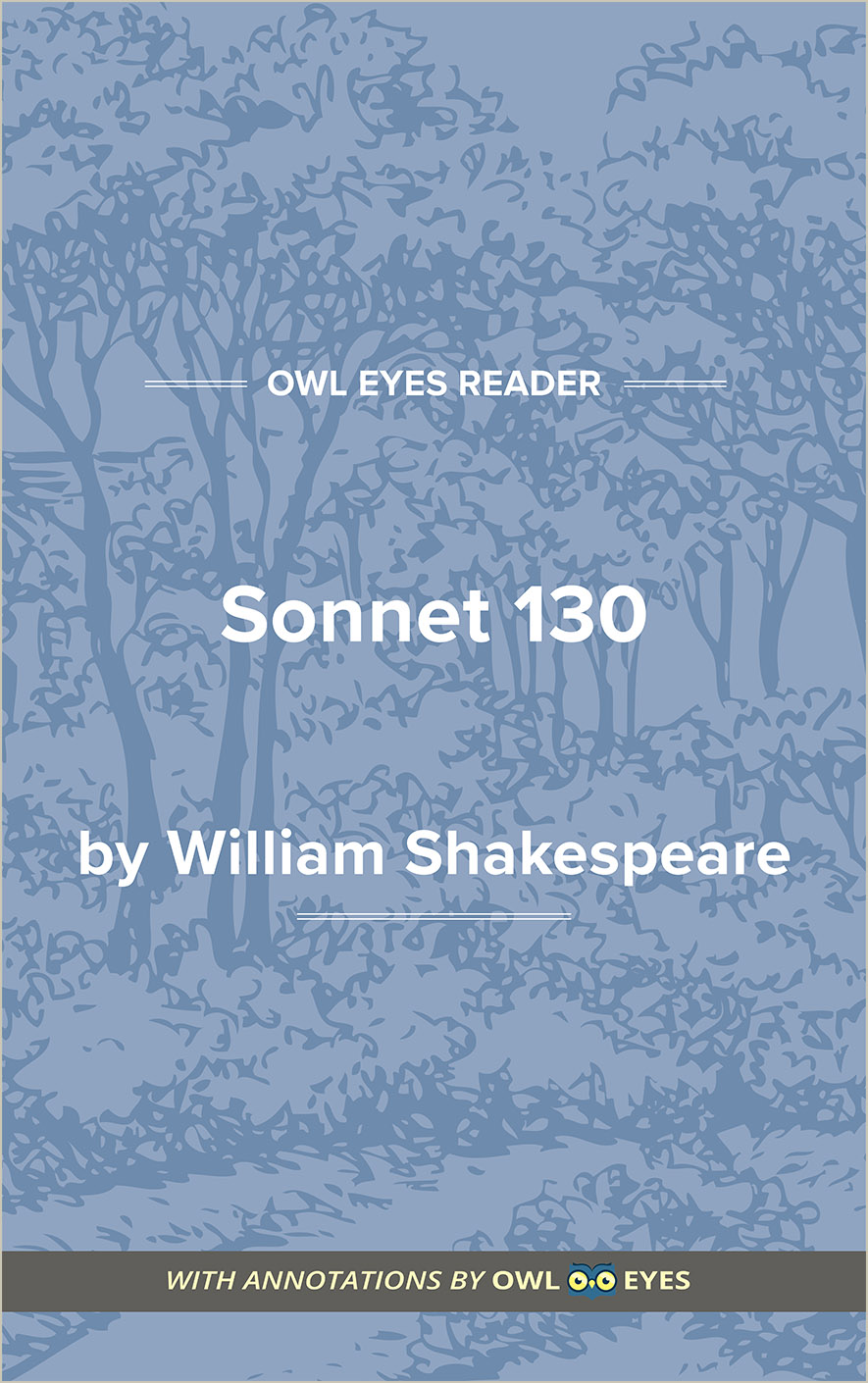- Annotated Full Text
- Literary Period: Renaissance
- Publication Date: 1609
- Flesch-Kincaid Level: 10
- Approx. Reading Time: 0 minutes
Sonnet 130
Sonnet 130 takes place near the beginning of the series of “dark lady” sonnets. After 126 sonnets, the speaker shifts his affections and attentions from the fair youth to a new object of desire, an unnamed woman often termed the “dark lady.” The speaker has a vastly different relationship with the dark lady than he does with the fair youth. The pure, platonic, unrequited love at the heart of the first set of sonnets is replaced with an earthly, physical relationship with the dark lady. In Sonnet 129, sex enters the equation for the first time in the sonnets, bringing up feelings of shame for the speaker. In Sonnet 130, the speaker arrives at a grounded, playful treatment of the dark lady. He takes the tradition of the blazon—the love poem in which the poet lists the best characteristics of the beloved—and turns the form on its head. Rather than hold the lady on an idealized pedestal, the speaker brings her down to earth. He takes account of her numerous imperfections, from her reeking breath to her gray complexion. Yet the imperfections add up to a beguiling, admiring portrait of his lover. In a sense, the poem is about the flawed nature of love poetry, with its idealization of women.
- Annotated Full Text
- Literary Period: Renaissance
- Publication Date: 1609
- Flesch-Kincaid Level: 10
- Approx. Reading Time: 0 minutes

